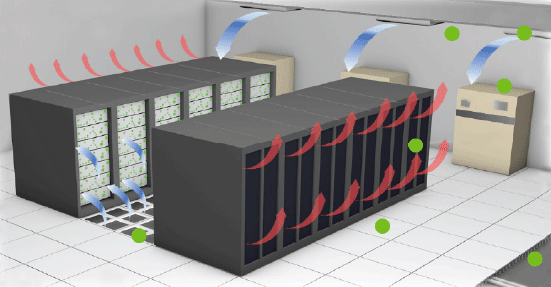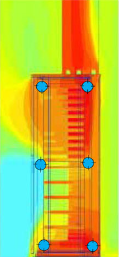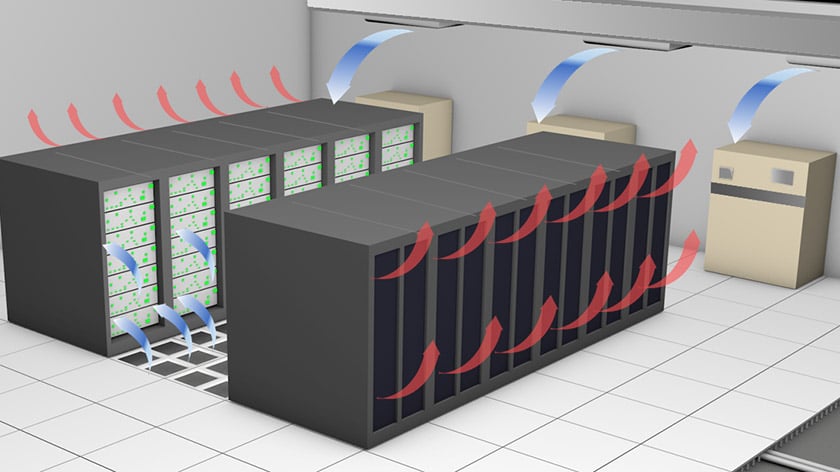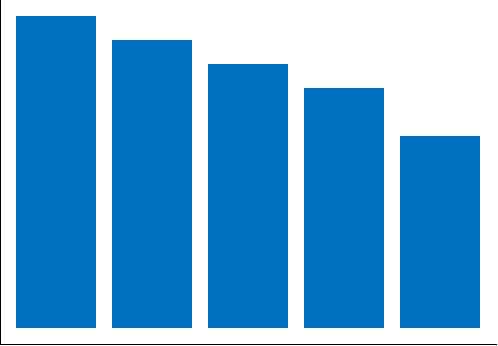Optimize Your Data Center Cooling Safely, Easily, and Cost-Effectively
Cooling represents one of the largest portions of data center energy usage -- 20-35% on average. Most data centers are overcooled with ambient...
2 min read
![]() Packet Power Team
:
Oct 4, 2017 2:30:00 PM
Packet Power Team
:
Oct 4, 2017 2:30:00 PM

One of the most contentious areas of data center operating cost reduction is cooling. There is an ongoing tension between lowering cooling costs and keeping facility temperatures within a deliberately conservative range. Many data centers accept higher cooling costs to avoid going outside the "comfort zone". Some avoid addressing cooling optimization based on a belief that the cost to implement doesn't have an acceptable payback -- costs too much and/or takes too long.
But optimizing data center cooling can be easier than you think.
Many cooling optimization systems:
Getting started
Regardless of the cooling optimization or environmental management initiative chosen, reliable environmental monitoring is necessary as it:
The perception is that installing an environmental monitoring system will be a hefty part of the annual improvement budget. Advances in wireless monitoring technology now allow detailed environmental monitoring to be implemented for a fraction of the cost of wired solutions -- as low as $3,000 - $5,000 for a mid-sized data center.
Establishing a baseline
The first step in any cooling management program is to determine the baseline operating efficiency. This is achieved by monitoring temperature on cooling input and output lines as well as strategic areas throughout the data center. Monitoring power utilization for mechanical loads also helps provide a baseline operating efficiency.
Analysis
Once the baseline data is collected, compare it to industry benchmarks to identify potential efficiency targets. A physical evaluation or data center audit can also be conducted to identify practical areas where cooling systems can be improved. If time and resources allow, a computerized fluid dynamics analysis will more precisely reveal the gains from cooling system optimization along with estimated return on investment.
Prescriptive plan
The next step is to define what needs to be done to achieve the savings. This can be as simple as adding blanking panels to more complex initiatives like motor retrofits. Facilities managers can use real-time thermal data to raise operating temperatures with the confidence they will remain within ASHRAE recommended operating margins.
Here are six ways to lower costs through smarter cooling.
Many cooling optimization systems involve complex interactions and feedback algorithms with the cooling control system. In most cases, a passive approach that uses one-time manual cooling adjustments to the existing cooling control systems will yield almost the same gains as a complex (and much more expensive) system that intervenes with the cooling controls on an ongoing basis.
Implementation
The effects of changes implemented should be immediately visible via the environmental and power monitoring system. Real-time feedback enables implementation in stages to limit any perceived risk while providing data to calculate return on investment and justify additional scaling.
ROI and typical savings
It is not uncommon for cooling optimization strategies to result in 5-25% annual cooling cost savings. And simpler, passive solutions that don't interface with controls can generate a payback in as little as a few months. Read more about cooling optimization.
We can help
Packet Power offers wireless environmental monitors that measure temperature at 1 to 12 points per unit as well as humidity and differential pressure. Our solutions are easier and faster to install than wired solutions and provide real-time data immediately after being powered up. Our newest environmental monitors install in seconds.
Contact your local Packet Power Partner or email sales@packetpower.com to learn more.

Cooling represents one of the largest portions of data center energy usage -- 20-35% on average. Most data centers are overcooled with ambient...

Cooling costs are a major component of data center operating costs. The economic and environmental benefits that can result from lowered cooling...

Cooling is one of the main drivers of data center operating costs, but figuring out how to get the information needed to drive costs down can be...